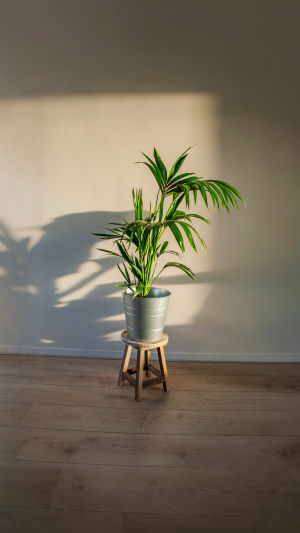<h3>Welcome to Our Light-Filled Garden Journey</h3>
Hello, fellow plant enthusiasts! Have you ever wondered why some of your plants absolutely bask in the sun, while others look scorched and unhappy?
Understanding light is just as crucial as knowing how to water your plants.
Together, we're going to unravel the mysteries of plant light requirements and discover how to give each of our green companions the perfect spot to thrive. Ready to brighten up our gardening knowledge?
<h3>Why Light Is the Ultimate Plant Food</h3>
Just like we need food to grow, plants need light—it's their primary energy source through a magical process called photosynthesis. Light intensity, duration, and quality all play a vital role in a plant's health, growth, and flowering ability. Too little light can lead to leggy, pale growth, and lack of blooms, while too much direct sun can scorch leaves and stunt development. Our goal is to find that sweet spot for every plant!
<h3>Decoding Light: Full Sun, Partial Shade, and Full Shade</h3>
Let's clarify what these common gardening terms really mean for our plants:
• Full Sun: This means at least six hours of direct, unobstructed sunlight per day. Think south-facing windows for indoor plants or open garden beds for outdoor ones. Plants like sunflowers, most roses, and many vegetables thrive in full sun.
• Partial Sun/Partial Shade: This indicates four to six hours of sunlight daily, often with some protection from the intense midday sun. It can be morning sun and afternoon shade, or dappled light throughout the day. Many flowering perennials, like impatiens and begonias, prefer this.
• Full Shade: This doesn't mean no light at all, but rather less than four hours of direct sun, or consistent dappled light. These areas are usually under dense trees or on the north side of a building. Plants such as ferns, hostas, and some impatiens are perfect for full shade.
<h3>Recognizing Your Plant's Light Needs</h3>
How do we know what our plants prefer?
• Read the plant tag: This is your first and most reliable guide. Nursery tags usually specify the plant's light requirements.
• Observe the leaves: Plants adapted to high light often have smaller, thicker leaves, sometimes with a waxy coating. Shade-lovers tend to have larger, thinner leaves with a darker green color to maximize light absorption.
• Watch for signs of stress:
• Too little light: Leggy stems, small pale leaves, lack of flowering, dropping lower leaves.
• Too much sun: Brown or yellow scorched spots on leaves, faded leaf color, wilting despite adequate watering.
<h3>Placement Strategies for Indoor Plants</h3>
For our indoor green companions, window orientation is key:
• South-facing windows: Offer the most intense and prolonged light, ideal for sun-loving plants like succulents, cacti, and many flowering houseplants.
• East-facing windows: Provide gentle morning sun, perfect for plants that prefer bright, indirect light or partial sun, such as orchids, African violets, and many herbs.
• West-facing windows: Offer intense afternoon sun, which can be similar to south-facing but might be too harsh for some delicate plants.
• North-facing windows: Provide the least amount of direct light, best for low-light tolerant plants like ZZ plants, snake plants, and peace lilies.
Consider placing plants a few feet away from the window if the light is too intense, or using sheer curtains to diffuse direct light.
<h3>Outdoor Plant Placement Considerations</h3>
For our outdoor gardens, observe how sunlight moves across your yard throughout the day. Areas under tall trees will offer different light than open patches. Consider shadows cast by your house or fences. Remember that the sun's path changes with the seasons, so a spot that's sunny in summer might be shadier in winter. Planting taller plants where they can naturally shade smaller, more sensitive plants is also a clever strategy.
<h3>Adapting to Changing Conditions</h3>
Plants aren't static, and neither is the light in our homes or gardens. We recommend:
• Rotating potted plants: This ensures even growth and prevents them from leaning towards the light.
• Moving plants seasonally: Bring tender plants indoors or to a sheltered spot during harsh weather or intense summer sun.
• Using grow lights: For indoor plants not getting enough natural light, supplementary grow lights can make a huge difference, especially during shorter winter days.
<h3>Let's Shed Some Light on Our Gardens!</h3>
Understanding and meeting your plants' light requirements is a rewarding step toward a thriving garden. By observing, learning, and adjusting, we can create an environment where every leaf and bloom reaches its full potential. What are your biggest light challenges in your garden or home? Share your insights and questions with us—we're all learning together!
Here's to making our plants happy and our spaces radiant. Happy gardening!
This guide incorporates established horticultural principles and expert recommendations on plant physiology and light requirements, ensuring credible advice for optimal plant health.





